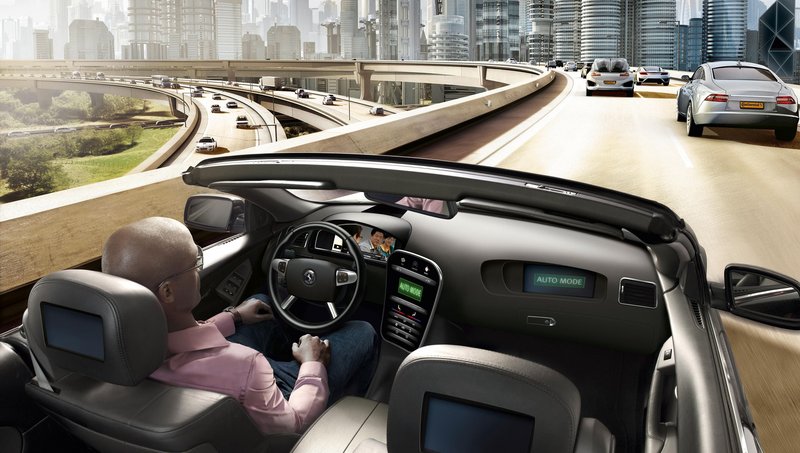Automated Driving
Automated driving – the future is now
From lane departure warning systems to brake assist (BAS), today's advanced driver assistance systems provide the basis for the automated driving of the future. Continental is using its full innovative prowess to drive forward this trend and is developing intelligent technologies that take over more and more driving functions – as long as the driver wants them to. The advantage: increased safety, more comfort, more convenience, and more efficiency.
Drivers can sit back and relax – automation is coming
Automation will bring radical changes to some aspects of driving. In the future, increasing traffic density will give drivers time for other activities in the car that are still impossible today. Stop/start traffic and parking in tight parking spaces will no longer be daunting prospects. Advanced driver assistance systems already allow the owner to hand over vehicle guidance to the vehicle in certain situations. There will be a clear progression from partially automated to fully automated driving. Drivers will never lose the dynamism, passion, and enjoyment of driving – at the press of a button, they can turn the systems on or off as desired.
Comprehensive tests and continuous enhancement
Continental's specialists from various disciplines are driving forward the trend of automated driving. As a supplier for automotive manufacturers worldwide, Continental is taking on the challenges of automated driving. For example, it is developing new sensor technologies and high-performance computer systems for the coming tasks. The human-machine dialogue involved in automated driving requires new components and solutions. Cluster intelligence, formed from the vehicle fleet on the road, will allow highly and fully automated vehicles to literally see around corners. Large quantities of data must be transmitted extremely reliably inside and outside the vehicles. The basis for this development – the advanced driver assistance systems – is already providing important services in overcoming the sixth challenge facing automated driving: its gradual acceptance by society.
The challenges of fully automated driving
Sensor technology: Zero accidents are no longer a utopia. Advanced driver assistance systems with sensors can record the area around the vehicle just as well as humans, if not better. Rear-view mirrors can be replaced by camera systems and not only increase safety, but also reduce CO2 emissions from cars and trucks. For sensor fusion, and ultimately for evaluating the sensor data, Continental is researching the use of artificial intelligence and bringing its broad knowledge of sensor technology and electronic control units to the development process.
Cluster connectivity: The Internet will become the car's sixth sense. Continental is working on a powerful backend that will provide highly accurate traffic information. The basis for this will be the sensor data shared by road users coupled with the traffic backend computer. This increases the sensors' range and enables the vehicle to "see around corners."
Human-machine dialogue: What is the strategy if the vehicle arrives at the freeway exit in fully automated mode and the driver is supposed to take control again? Continental is developing the necessary components for future interaction between vehicles and drivers and testing new solutions to the changing demands on the human-machine dialogue.
System architecture: Future system architectures for automated driving will have to securely manage the huge amount of data that is to be processed in the car. One gigabyte of sensor data per minute has to be processed in real time. Increasing sensor output and the resultant increase in the volume of data require a powerful and reliable electronics architecture.
Reliability: At present, advanced driver assistance systems function as a fallback mode for the driver. With automated driving, in the event of a malfunction, the vehicle must be able to continue safely on its way or to come to a controlled, safe stop. Specially configured brake systems are already being tested in fleets. Protection against attempts at manipulation must also be considered. Continental is working with other partners from the IT and automotive industries on processes that identify such attempts and protect the vehicle systems accordingly. This kind of security requires ongoing updates to the vehicle software to ensure that the latest technology is used throughout the vehicle's lifespan.
Acceptance: As Continental sees it, automated driving will be accepted if people trust the technology being used. Trust evolves from the intelligent dialogue between the driver and the vehicle. The developers of today's advanced driver assistance and driver information systems are taking this into account and, with the systems' ever increasing prevalence, laying the groundwork for the acceptance of future automated driving functions.
